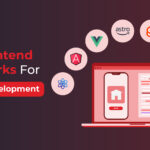In the present globalized world successful correspondence across language hindrances is essential. best voice translator apps have arisen as amazing assets that work with ongoing interpretation empowering clients to convey flawlessly in various dialects. Fostering a voice translation application includes a mix of cutting-edge innovations including speech recognition, natural language processing (NLP) and machine interpretation. This guide dives into the fundamental steps and considerations for making an expert and proficient voice translation application.
Grasping Voice Translation Technology
Voice Translation Technology coordinates a few parts to precisely change the spoken language into another dialect. The essential technologies included are:
1. Speech Recognition:
It Converts spoken words into text. Famous APIs incorporate Google Cloud Speech-to-Text, IBM Watson Speech-to-Text and Microsoft Azure Speech.
2. Natural Language Processing(NLP):
It Analyzes and grasps the setting of the spoken words. NLP engines like Google’s Dialogflow, IBM Watson and Microsoft’s LUIS are usually used.
3. Machine Translation:
It Interprets the processed text into the objective language. Noticeable APIs include Google Translate Programming interface, Microsoft Translator and Amazon Translator.
Planning and Requirements
1. Characterize the Scope and Purpose
The main thing in fostering a voice translation application is to characterize its Scope and Purpose. Pick the ideal interested groups, supporting dialects and explicit use cases. Ensure that the application will fulfill the unique consideration of casual clients, business specialists or explorers.
2. Conduct Market Research
Conducting intensive statistical surveying grasps the competitive landscape and client assumptions. Investigate existing voice translation applications to recognize their assets and weaknesses. Assemble experiences on highlights, UI plan, and execution to illuminate your application’s turn of events.
3. Recognize Core Elements
Recognize the core elements that your application will offer. Normal elements that ought to be included are consistent translation for instant understanding of communicated words, multi-language backing to help and support various dialects, offline mode, Text translation to decipher the created text and conversation mode for reliable understanding during a discussion between at least two parties.
Design and Development
On-Demand Applications Advancement
On-Demand Apps Development has changed how administrations are conveyed across different businesses from transportation to food conveyance and presently language translation. Voice translation applications fall under the category of on-demand applications where clients can get demand benefits instantly at whatever point and any place they need them. Developing such an application requires a profound comprehension of mobile application development standards including Android and iOS app development platform-specific considerations.
Mobile App Development
Mobile App Development incorporates the whole process of making software applications that run on mobile devices including cell phones and tablets. It incorporates Android and IOS application voice to voice translation app. Following are the steps to develop a successful mobile app:
1. Platform Choice
Picking the right platform is the most important phase in mobile app development. The two most famous stages are Android and iOS. Developers should choose whether to build a local application for each platform or pick a cross-platform solution. Local applications are constructed explicitly for one stage utilizing dialects like Kotlin for Android and Quick for iOS. Cross-platform applications on the other hand are created utilizing systems like React Native or Flutter that allow a single codebase to run on both platforms.
2. UX and UI Design
An intuitive and easy-to-use connection point is fundamental for a fruitful voice translation application. It mainly focuses on simplicity, accessibility and convenience. Key design standards include minimalist design to stay away from clutter and keep the interface point clean. Clear navigation is used to guarantee simple navigation with direct menu choices and responsive design is used to advance the application for different screen sizes and gadgets along with visual feedback to give viewable signs to demonstrate undivided attention, translation progress and mistakes.
3. Backend Development
The backend of a portable application handles the server-side logic, database administration and API integration. On account of a voice translation application the backend should be sufficiently robust to manage real-time data processing. It ought to likewise guarantee the secure capacity of client information and oversee validation and client meetings.
4. API Integration
Coordinating third-party APIs is fundamental for adding advanced functionalities to the application without building them from scratch. For a voice translation application this incorporates APIs for speech recognition, machine translation and text-to-speech. API integration likewise includes handling programming interface reactions, managing latency and guaranteeing that the application stays responsive in any event even during heavy use.
Adapting Content on Music Platforms
For content creators in the music industry adaptation is a basic part of their work. Music platforms give a significant road to creators to convey their work, contact new audiences and generate revenue. Applications intended for content creator music platforms offer tools that work on the most common way of uploading, managing and monetizing music content.
For content owners applications that take special care of music platforms are fundamental for managing and safeguarding licensed innovation. These applications also help the owners to track where their content is being used to ensure that they receive proper information. these applications can assist owners with negotiate licensing deals and manage royalties so that they expand the worth of their content.
Testing and Quality Assurance
Unit Testing
Conduct unit testing to guarantee every part works accurately. Test individual modules like speech recognition, NLP and machine translation to identify and fix issues early.
Integration Testing
Integration testing checks that all parts cooperate flawlessly. Test the whole translation pipeline from speech input to voice result to guarantee precision and execution.
User Acknowledgment Testing
User acknowledgment testing (UAT) includes real clients testing the application in real-world situations. Gather feedback on ease of use, execution, and exactness to make vital enhancements.
Execution Testing
Performance testing assesses the application’s responsiveness, speed and adaptability. Test the application under different circumstances for example unique network speeds and gadget configurations to guarantee steady execution.
Security Testing
Security testing guarantees the application safeguards client information and protection. Execute encryption for information transmission, secure capacity for delicate data and powerful validation systems.
Deployment and Maintenance
Application store submission
Set up your application for submission to application stores. Follow the guidelines and requirements of platforms like Apple Application Store and Google Play Store. Give clear portrayals, screen captures and special materials.
Monitoring and Examination
Monitoring and analytics devices are executed to follow application execution and user behavior. Use insights from examination to recognize regions for development and improve the client experience.
Normal Updates
Consistently update the application to fix bugs, further performance improvement and add new elements. Keep clients informed about updates and improvements.
User Support
Give hearty client support through different channels for example in-application support, email and social media. Address client inquiries and issues immediately to keep a positive client experience.
Final verdicts:
Fostering a voice translation application includes an intricate exchange of cutting-edge innovations, careful preparation and thorough testing. By grasping the core parts, choosing the right technology stack and focusing on client experience designers can make an expert and productive voice translation application. Ceaseless checking, customary updates and responsive client support are fundamental for keeping up with the application’s performance and significance in a unique market.












They were willing to walk me through their ideas and provide suggestions when I wasn't sure about something.
Marcus Gitau Founder, Kumea, Agriculture Industry